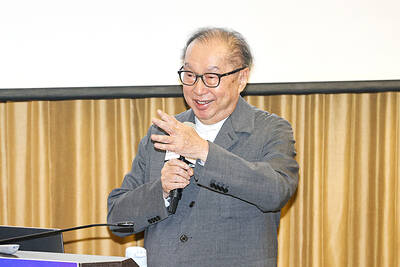Stocks rebounded this year from a three-year bear market that produced some of the biggest losses in decades. Shares of companies that stand to benefit most from accelerating economic growth led the gains.
"Purse strings started to loosen up, the mood changed and the investing public became enamored with buying companies that suddenly seemed like they weren't going out of business," said John Piccard, who helps manage US$400 billion for J.P. Morgan Fleming Asset Management in New York.
Technology companies were the year's best performers, such as Corning Inc, the world's largest maker of fiber-optic cable; ARM Holdings Plc, a designer of semiconductors used in two-thirds of the world's mobile phones; and Softbank Corp, Japan's second-largest provider of high-speed Internet access.
Producers of raw materials, including Inco Ltd and Phelps Dodge Corp, became market leaders in the second half. Their shares rose along with commodity prices, which surged amid growing demand from countries such as China.
Morgan Stanley Capital International Inc's World Index, a benchmark for companies based in 23 developed countries, gained 31 percent for the year.
small companies and emerging markets
Smaller companies and emerging markets were even more rewarding. The MSCI World Small-Cap Index, whose members are valued at US$200 million to US$1.5 billion, climbed 56 percent. The MSCI Emerging Markets Free Index, tracking companies based in 26 countries, advanced 51 percent.
The MSCI World index had fallen for the previous three years, and had lost half of its value during the decline. The string of losses was the longest since its introduction in 1970.
In the US, the benchmark Standard & Poor's 500 Index sank 49 percent between March 2000 and October 2002. The retreat was the biggest for any bear market since 1937-38, when the country was recovering from the Great Depression.
Stocks started last year by failing to extend a recovery from their October lows. The MSCI World hit bottom on March 12 at 710.79, about seven points above the six-year low reached on Oct. 9, 2002.
Europe's Dow Jones Stoxx 50 Index and the Euro Stoxx 50, a measure for the 12 countries in the euro region, also set their 2003 lows on March 12. The S&P 500 did so a day earlier. Prices then began climbing as US-led forces took control of Iraq.
For the year, the S&P 500 added 26 percent and the Dow Jones Industrial Average climbed 25. The Nasdaq Composite Index gained 50 percent. After accounting for a rise in the value of European currencies against the dollar, the Stoxx 50 advanced 32 percent and the Euro Stoxx 50 rallied 39 percent.
Germany's DAX Index jumped 64 percent in dollar terms, the biggest gain for Western Europe's 17 national markets. France's CAC 40 rose 39 percent. The UK's FTSE 100 added 26 percent.
Asian markets joined the rally at the end of April after withstanding "Sony shock." Shares of Japan's Sony Corp, the world's second-largest maker of consumer electronics, plummeted 27 percent in two days after the company reported a fourth-quarter loss that was about triple analysts' estimates.
The MSCI Asia-Pacific Index, tracking companies in 14 developed and emerging markets, closed April 28 at the lowest level in its 16-year history. On the same day, Japan's Nikkei 225 Stock Average dropped to a two-decade low and the Topix index came within 0.3 percentage point of a low set March 11.
increasing demand from overseas
Demand from overseas contributed to the change of direction.
In Japan, international investors purchased more shares than they sold for 23 straight weeks between May and September, according to figures from the Tokyo Stock Exchange. The streak was the longest since 1996.
As funds flowed into the region, the MSCI Asia-Pacific recovered to show a 38 percent gain for last year. The Nikkei 225 matched the rally in dollar terms; the Topix rose 37 percent.
Hong Kong's Hang Seng Index added 36 percent. Thailand's SET Index, the region's best performer, more than doubled.
Optimism that the US will lead a global economic rebound lifted stocks in Asia and elsewhere. The world's largest economy expanded in the third quarter at an 8.2 percent annual rate, the fastest pace in two decades.
"The one thing I am looking at is whether US growth will sustain [itself] going into the next year," said Marc Desmidt, who helps manage the equivalent of US$7.4 billion at Merrill Lynch Investment Managers Co in Tokyo. "The question is: Can growth stabilize at a high level, around say 4 percent?"

BYPASSING CHINA TARIFFS: In the first five months of this year, Foxconn sent US$4.4bn of iPhones to the US from India, compared with US$3.7bn in the whole of last year Nearly all the iPhones exported by Foxconn Technology Group (富士康科技集團) from India went to the US between March and last month, customs data showed, far above last year’s average of 50 percent and a clear sign of Apple Inc’s efforts to bypass high US tariffs imposed on China. The numbers, being reported by Reuters for the first time, show that Apple has realigned its India exports to almost exclusively serve the US market, when previously the devices were more widely distributed to nations including the Netherlands and the Czech Republic. During March to last month, Foxconn, known as Hon Hai Precision Industry

Taiwan Semiconductor Manufacturing Co (TSMC, 台積電) and the University of Tokyo (UTokyo) yesterday announced the launch of the TSMC-UTokyo Lab to promote advanced semiconductor research, education and talent development. The lab is TSMC’s first laboratory collaboration with a university outside Taiwan, the company said in a statement. The lab would leverage “the extensive knowledge, experience, and creativity” of both institutions, the company said. It is located in the Asano Section of UTokyo’s Hongo, Tokyo, campus and would be managed by UTokyo faculty, guided by directors from UTokyo and TSMC, the company said. TSMC began working with UTokyo in 2019, resulting in 21 research projects,

Ashton Hall’s morning routine involves dunking his head in iced Saratoga Spring Water. For the company that sells the bottled water — Hall’s brand of choice for drinking, brushing his teeth and submerging himself — that is fantastic news. “We’re so thankful to this incredible fitness influencer called Ashton Hall,” Saratoga owner Primo Brands Corp’s CEO Robbert Rietbroek said on an earnings call after Hall’s morning routine video went viral. “He really helped put our brand on the map.” Primo Brands, which was not affiliated with Hall when he made his video, is among the increasing number of companies benefiting from influencer

Quanta Computer Inc (廣達) chairman Barry Lam (林百里) yesterday expressed a downbeat view about the prospects of humanoid robots, given high manufacturing costs and a lack of target customers. Despite rising demand and high expectations for humanoid robots, high research-and-development costs and uncertain profitability remain major concerns, Lam told reporters following the company’s annual shareholders’ meeting in Taoyuan. “Since it seems a bit unworthy to use such high-cost robots to do household chores, I believe robots designed for specific purposes would be more valuable and present a better business opportunity,” Lam said Instead of investing in humanoid robots, Quanta has opted to invest